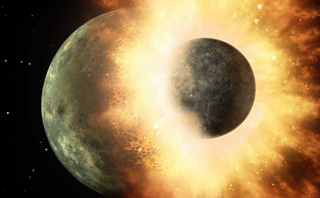The Late Heavy Bombardment and its Impact on the Terrestrial Planets
Sanuja Senanayake1, Jenna Sie1, Brendan Visser1 and Cassie Vocke1
1Geology Undergraduate Students: Fall 2014, University of Calgary.
Abstract
The Late Heavy Bombardment (LHB) is a hypothetical astrophysical event which occurred in our Solar System 4.1 to 3.8 billion years ago. At this time, an increased flux of impacting materials hit the Earth, Moon and other terrestrial planets of the inner Solar System. This has been suggested as the source for the increased number of crater impacts seen on the lunar surface, Venus, and Mars, and inferred to have struck all the inner terrestrial planets; preserved evidence has yet to be discovered on Earth. Several theories have been proposed to explain the crater formations, however the focus will be on the two most accepted theories: the Nice Model and Planet V Hypothesis. The preservation of craters from the LHB is best seen on the Moon due to the lack of plate tectonics, minimal erosion and deposition. Analyzing the surface of the Moon can help us understand the impact that the LHB had on the inner solar system. A lunar timescale is currently being modified, and when calibrated with radiometric dates from Martian samples, a timescale for Mars and other planetary bodies could be developed to verify if the LHB was a synchronous event. The LHB was early in Earth’s evolution and the contribution of extraterrestrial material to the planet is thought to have affected it in different ways; this includes the development of the atmosphere, biosphere and hydrosphere. The LHB is important not only to explain the sudden increase in crater evidence but also to help confirm the current geochemical properties of the terrestrial planetary system as seen today.
